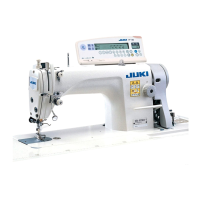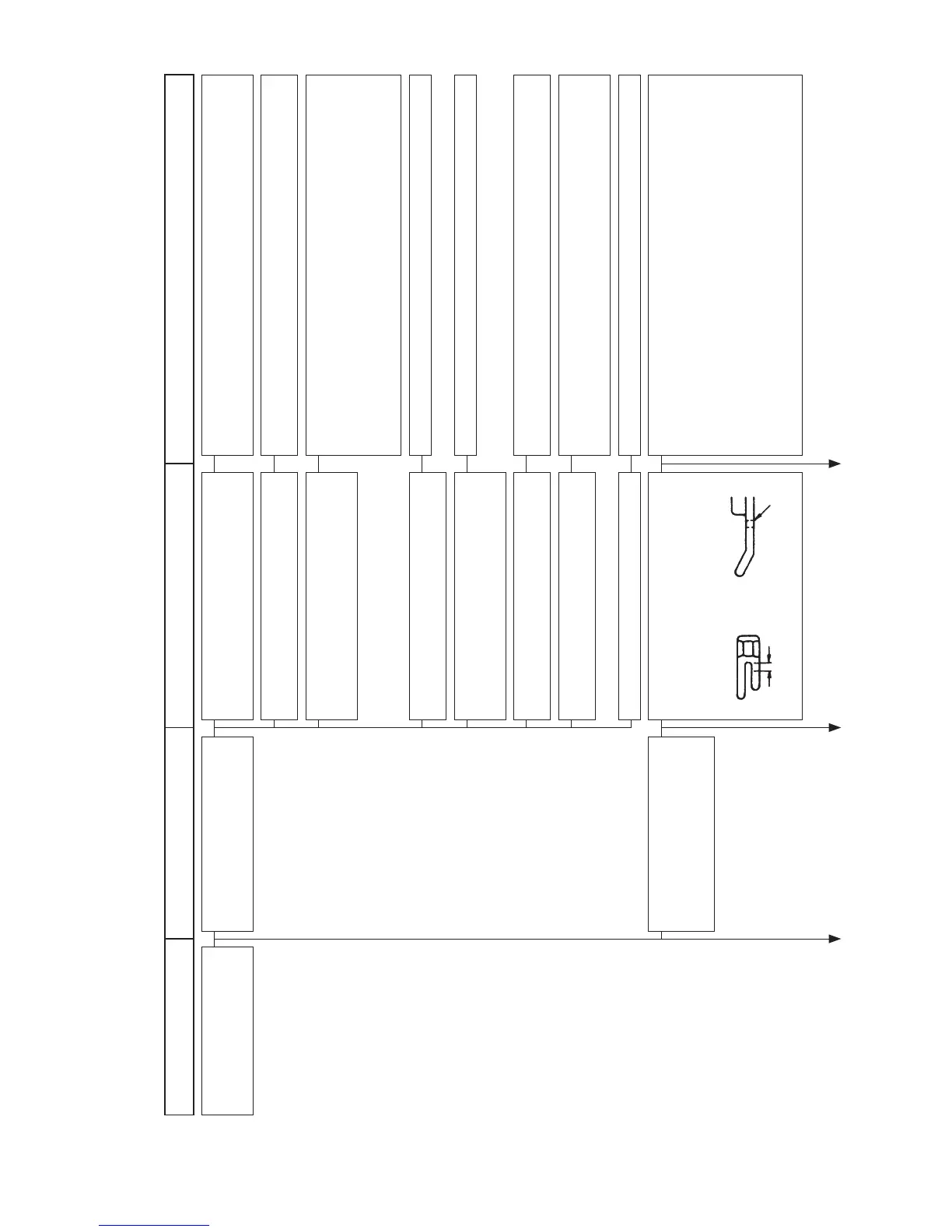5. TROUBLES AND CORRECTIVE MEASURES
(1) Mechanical components
Trouble Cause (1)
a
b
Cause (2) Check and corrective measures
1. Skipping of one or more
stitches occurs at the start
of sewing.
1-1) The needle thread passing
through the needle is too short
after thread trimming.
1)-A Something is wrong with the needle
threat route and the needle thread
tension is too high at thread trimming.
Check the needle thread path. Remove thread entangled with thread
guide pin, or correct the position of the thread guide on the thread stand
or other troubles.
1-2) An inappropriate needle,
throat plate, or presser is used.
Alternatively, the pressure of
the presser is too low.
2)-A The presser foot can not hold the needle
thread because “a” dimension of the
relief at “b” of the presser foot is too
large.
Check “a” and “b” of the presser foot, and “A” of the throat plate.
c
When synthetic thread is used for tricot “a”< 0.8 mm, and radius of
“A” and “b”< 0.3 mm.
c
When synthetic thread is used, “a” shall be smaller than 1.2 mm,
and there shall be no relief at “b” and “A”.
c
For cotton thread, the relief at “a”, “b” and “A” should be
minimized as long as good tightness of stitches is obtained.
c
The smaller the relief at “a”, “b”, and “A”, the better for
lighter-weight or coarser fabrics, more slippery thread, or smaller
stitch length.
Turn the thread tension nut of the 1st thread tension disk
counterclockwise to decrease the tension.
Check whether the floating amount of the 2nd thread tension disk reads
between 0.5 and 1 mm when the hook thread presser is pushed into until
the tip of the presser reaches the bobbin. The floating amount is
adjustable by moving the tension release wire on the underside of the
bed. Check whether the disk is horizontally loosened. If not, turn the
thread tension spring 180 degrees or correct the spring inclination.
Check and correct the cam timing in accordance with 3-6.
Check for loosened setscrew of the thread take-up picker.
Removing the throat plate, check and correct the position of the counter
knife, or check for any scratch on the moving knife (Refer to 4-(8)).
Check the hole of the knife thread guide and hook for scratches or burrs,
and if a scratch or burr has been found, buff it. If buffing does not
correct the trouble, replace the components.
Correct the timing for a synthetic thread (special)
1)-B The tension of the 1st thread tension
disk is too high.
1)-C The floating amount of the 2nd thread
tension disk is insufficient at thread
trimming.
1)-D The timing of the tread trimming cam is
too early.
1)-E The needle thread is detached at thread
trimming due to wrong position of the
hook thread presser.
1)-F The counter knife is too close to the
needle, or the knife tip is too sharp.
1)-G The knife thread guide, moving knife,
or hook has a flaw.
1)-H The standard cam timing is too early.
To the next page To the next page To the next page
− 44 −

